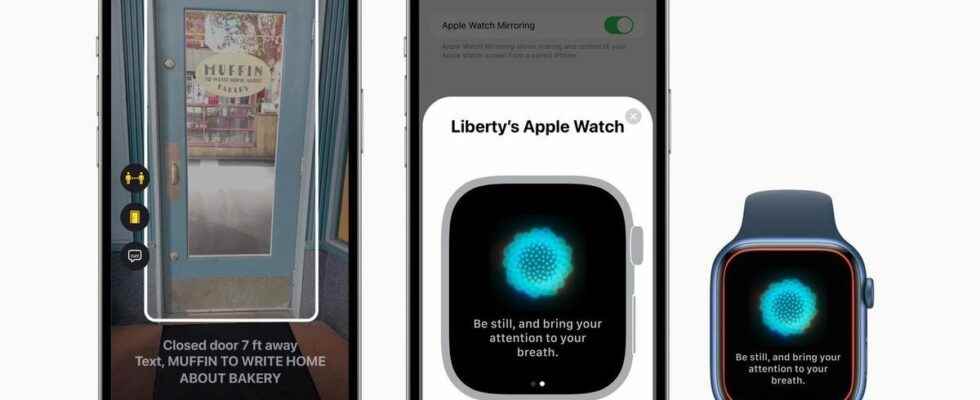Posted 2 days ago,
Reading 1 min.
Apple unveils a multitude of solutions adapted to people with disabilities. Among these tools is a new feature allowing blind and visually impaired people to analyze a door and instantly show them how to open it.
A new feature developed by Apple is intended to help visually impaired people correctly locate a door, analyze it and estimate the distance to it, so that it can be opened correctly. The system will indeed indicate whether it is open or closed, whether to push it, turn a button or pull a handle to open it. It can also detect and read the signs and symbols present around the door, such as the number of an office or the name and specialty of a store.
All this is made possible by the power of LiDAR (laser detection measurement systems) present on the latest generations of iPhones and the machine learning integrated into the device. “Door Detection” will soon be accessible via a brand new Detection mode within Magnifier, which is already part of the built-in accessibility features in iOS.
Innovations for the deaf and hard of hearing
At the same time, Apple announces that with Apple Watch video mirroring, it will now be possible to control your Apple Watch from your iPhone, using iPhone support features, such as Voice Control or Selection control. It will also be possible to use voice commands rather than touching the screen of your connected watch. Apple also wants to introduce new hand gesture controls. A double pinch will suffice, for example, to answer a call or hang up, ignore a notification, take a photo, start playing content or pause it, etc.
The brand also made other announcements, this time for people who are deaf and hard of hearing, with the arrival of live subtitles coming to iPhone, iPad and Mac, regardless of the audio source (phone call, FaceTime, videoconference, streaming, social networks…).
